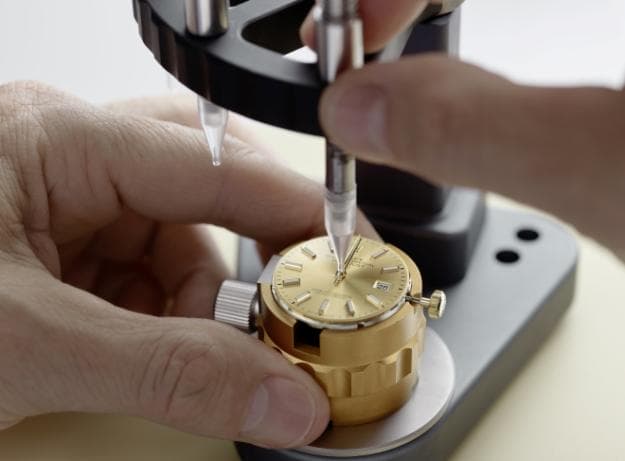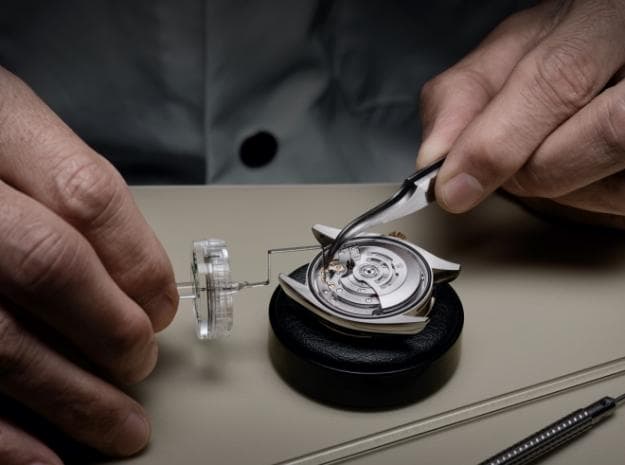A great watch can last you a lifetime. Quite a number of watch firms make this very bold claim, and magazines such as this one (but not only this one) back them up. How can we be so sure? To investigate, we looked into the promise of one watchmaking company in particular: Rolex. As the makers of the world’s most popular and best known fine timepieces, Rolex does indeed come right out and say that “there is no limit on how long a Rolex watch can keep working, being handed down from one generation to the next, and living several lives.” Helpfully, the brand explains how this is possible, but the short answer is excellent servicing. If you ensure that your watches are regularly serviced by Rolex-certified watchmakers and specialists, you have every reason to expect them to outlive you. Ok that is all you need to know, so you can quit reading now.
If you are sticking with this story, then you must want to know exactly how the brand plans to keep its promises. We shall do our best to explain the work of the Rolex World Service, which is an essential effort in the business of watches. We shall say at the outset that every Rolex watch sent in for full servicing gets completely overhauled, meaning the movement is disassembled and each component is carefully examined. And that is just to begin with – the proverbial tip of the iceberg if you will. We will get into that properly in a bit, but the story has skipped ahead a fair bit in the interest of teasing you about what lies ahead here. There is quite a lot to understand before we get to the full service experience.

Embracing the Details
Brands often remind us that the question of the after-sales experience is important, even if it is perhaps not as sexy as the novelties of the year. To use our example here, even though the Rolex World Service will make an impact on the entire lifespan of every Rolex watch, the news does not grab you in quite the same way as the announcement of the new Oyster Perpetual Submariner last year did. We will be honest and admit to that ourselves. This only lasted until we found out more about the servicing story, which is at the very least rich in details.
The images you see here track the watch and its movement through the entire servicing process, which is a great boon for owners of Rolex watches. This is where those details come into play.
First of all, for a mechanical watch to last through the decades, the service journey must be a fair bit longer
than one would expect with a car, for example. Rolex says that it is committed to making parts and labour for any given watch available for at least 35 years, following discontinuation by the manufacture. Let that sink in for a moment. It is not 35 years from the day you bought your watch, but 35 years from the day it was withdrawn. So for owners of the previous generation of Submariners, the countdown started in 2020. Just imagine how many components Rolex will be keeping on hand just to service all pre-2020 Submariners – and yes, do include all the older generation Submariners in this mental picture. Reportedly, the Submariner is quite a popular model so the manufacture must be prepared to take care of a lot of watches for a long time.
Another challenge of course is location. This is why Rolex World Service has the word “World” in it, and the brand asserts that it is available via workshops on every continent, except Antarctica. These service centres are either attached to official retailers, or the local Rolex office itself, and are staffed by Rolex-certified watchmakers and specialists. These watchmakers are the only ones authorised to perform servicing work on Rolex watches, which ranges from regular maintenance to the full service, which must be carried out to the brand’s specifications. These activities happen either on-site, at the service centres, or in Geneva, if need be, at the Rolex World Headquarters (the official name of the corporate home office). Just as Rolex certifies the watchmakers involved in this work, it also ensures that the service centres are supplied and equipped.
Legacy of Excellence
Given that Rolex World Service has its roots in founder Hans Wilsdorf’s vision to ensure that all the
brand’s watches receive the best possible servicing, it echoes the philosophy behind Rolex’s founding spirit: Perpetual. No matter how well made a watch might be, or how well-regulated its timekeeping mechanisms, it is all for nought if the work simply stops when the sale is closed. Rolex cites this idea in explaining why it established service centres everywhere, and it is hardly novel – Wilsdorf founded his watch company in 1905, and created the name Rolex in 1908.

Finally, it stands to reason that parts, labour and location must all come together to provide smooth-assilk service. It is all a bit more involved than selling a watch, and begins with maintenance, as noted earlier. All mechanical watches need this – they have not been imbued with magical self-healing properties by some nameless god. A standard recommendation is to send your watch to the service centre every five years or so, whether it has problems or not. Ideally, one should send the watch in for servicing before it develops trouble running. In this case, a comparison with automobiles is useful and instructive. You could also follow a two-year measure, which is the service guarantee that Rolex offers after every maintenance session. This guarantee covers both parts and labour.

There are also a variety of services at Rolex World Service workshops, including refinishing the case or adjusting the length of the bracelet. Some of these are even same-day services. One thing that is definitely not a same-day affair is the full service, which our research tells us is recommended for any given Rolex watch once every 10 years. Once the watchmakers at the workshop receive your watch, they will make an assessment of it, and then tell you what work they recommend doing, and the cost of course. If all parties are in agreement, the work proceeds in stages.
Coming Apart to Come Together
In stage one, the watchmaker separates the bracelet from the case. The caseback is then removed so that the watchmaker has access to the movement. Once the rotor and attendant system have been removed, the winding stem is cleared. The movement can now be extricated, with hands and dial in place. Bracelet, case and movement all head along separate tracks at this point. Once the dial and hands are separated from the movement, the movement is completely disassembled. Thus far, this is typical of most mechanical watches, but this next step is where it gets more complex.

As you can see, each component is carefully set aside in one of those wonderful trays that the watchmakers use to keep track of what goes where. Rolex says that each components is examined to determine if it still meets the manufacture’s exacting standards. If not, it is promptly replaced by a part from the same production line that created everything in the first place – the facility in Bienne, Switzerland. Now the components are all cleaned in an ultrasonic bath to remove all traces of impurities, before being dried. The movement is then reassembled in a particular order, just as it was dismantled in a particular order. Lubrication is applied as needed at this stage. The watchmaker then regulates the movement (see the microstella adjust visual) and then refits the dial and hands. These will have been on their own servicing journey, but usually nothing needs to be done, unless the watch is truly vintage.

The case, on the other hand, will also have been disassembled, and the individual parts will be re-polished or satin-finished by hand, according to the original finish. Rolex says that these are delicate processes that require great dexterity. The net result is that any scratches or marks will be removed, and that new-look lustre will return. This applies as relevant to the original metal of course. Gaskets are replaced and then crystal, bezel and case middle are reassembled.
Similarly, bracelets are broken down into their components, then polished or satin-finished, again according to the original finish. Everything is then cleaned up, and made ready for reassembly. Meanwhile, the movement is gently placed back into the case, and its accuracy is checked once again. Any needed adjustments are made, again with the microstella tool. With the caseback in place, there now follows a precision test
lasting a minimum of 24 hours. This is followed by a waterresistance test, in a hyperbaric chamber as seen here. Once all this is done, the bracelet is refitted, and the rate and functions of the watch are checked one last time. The aesthetics of the watch are also verified at this time. When all is done, the watch is placed in a special pouch and returned to the owner. The aforementioned two-year guarantee applies here too, of course.
But what happens if something more is needed, especially in the case of the historic Rolex watch? For that, one needs the services of the Restoration Atelier in Geneva, which is probably what the Rolex World Service centre will recommend. That is another story though, because historic Rolex timepieces are quite different to contemporary Rolex watches.


